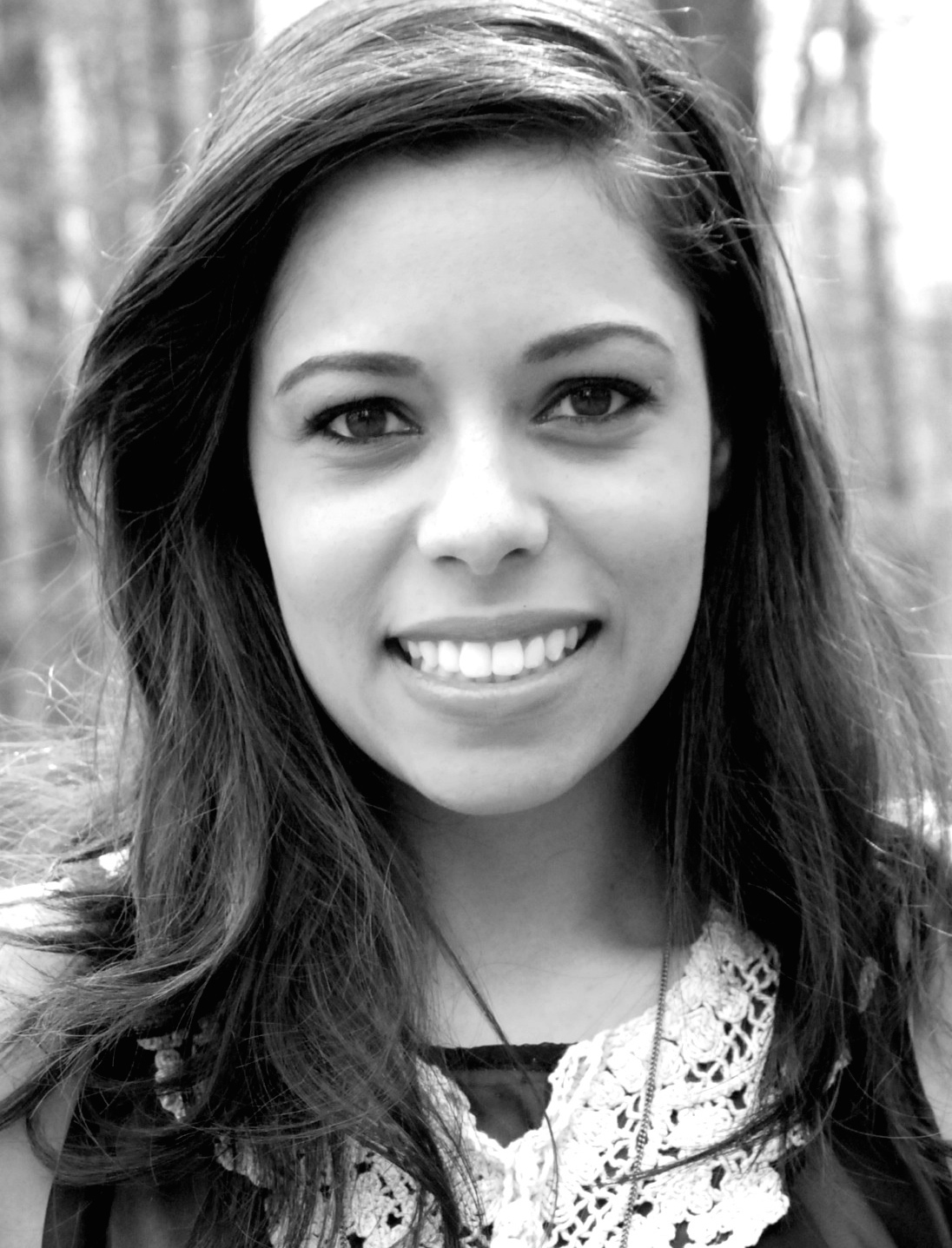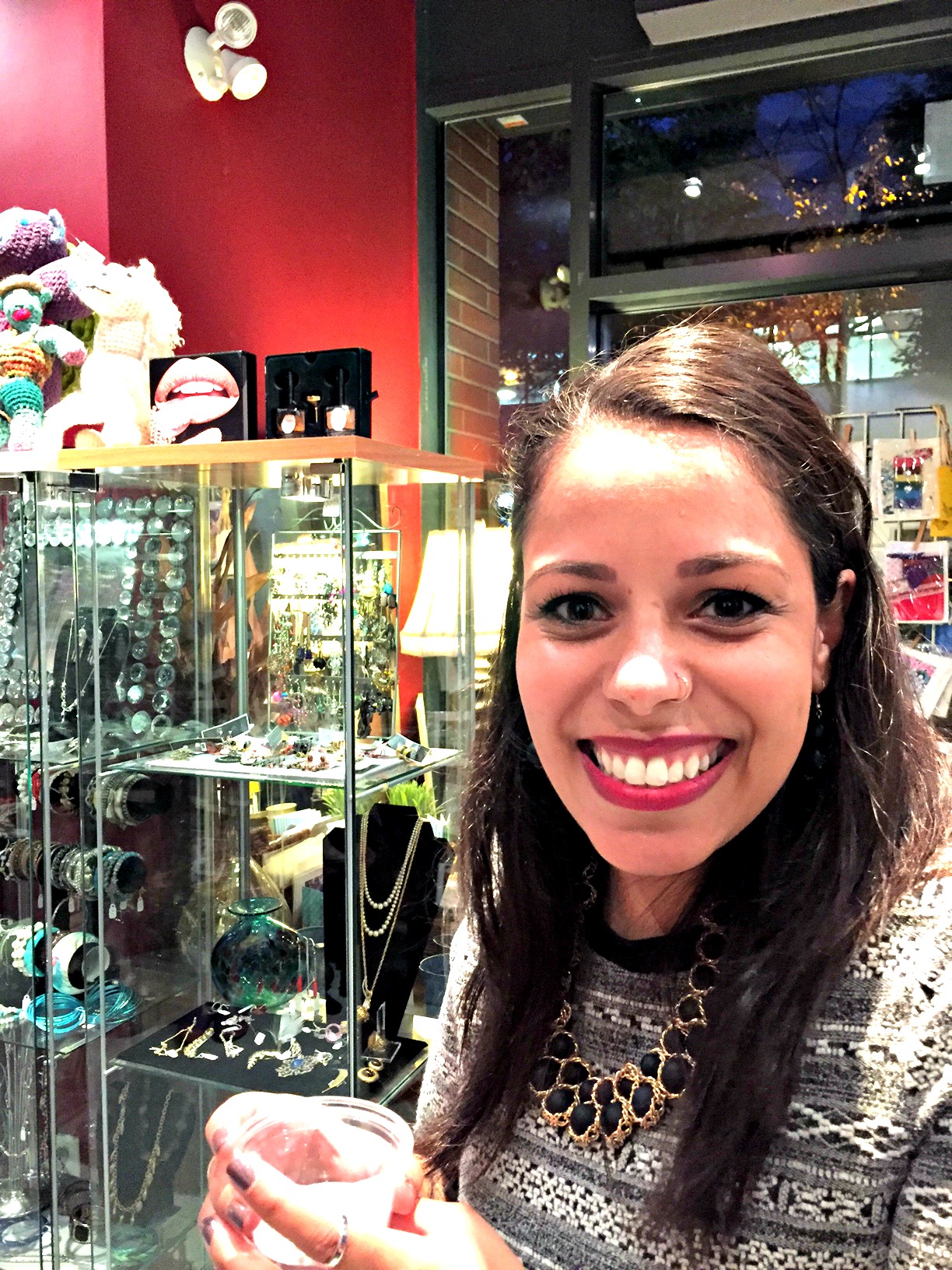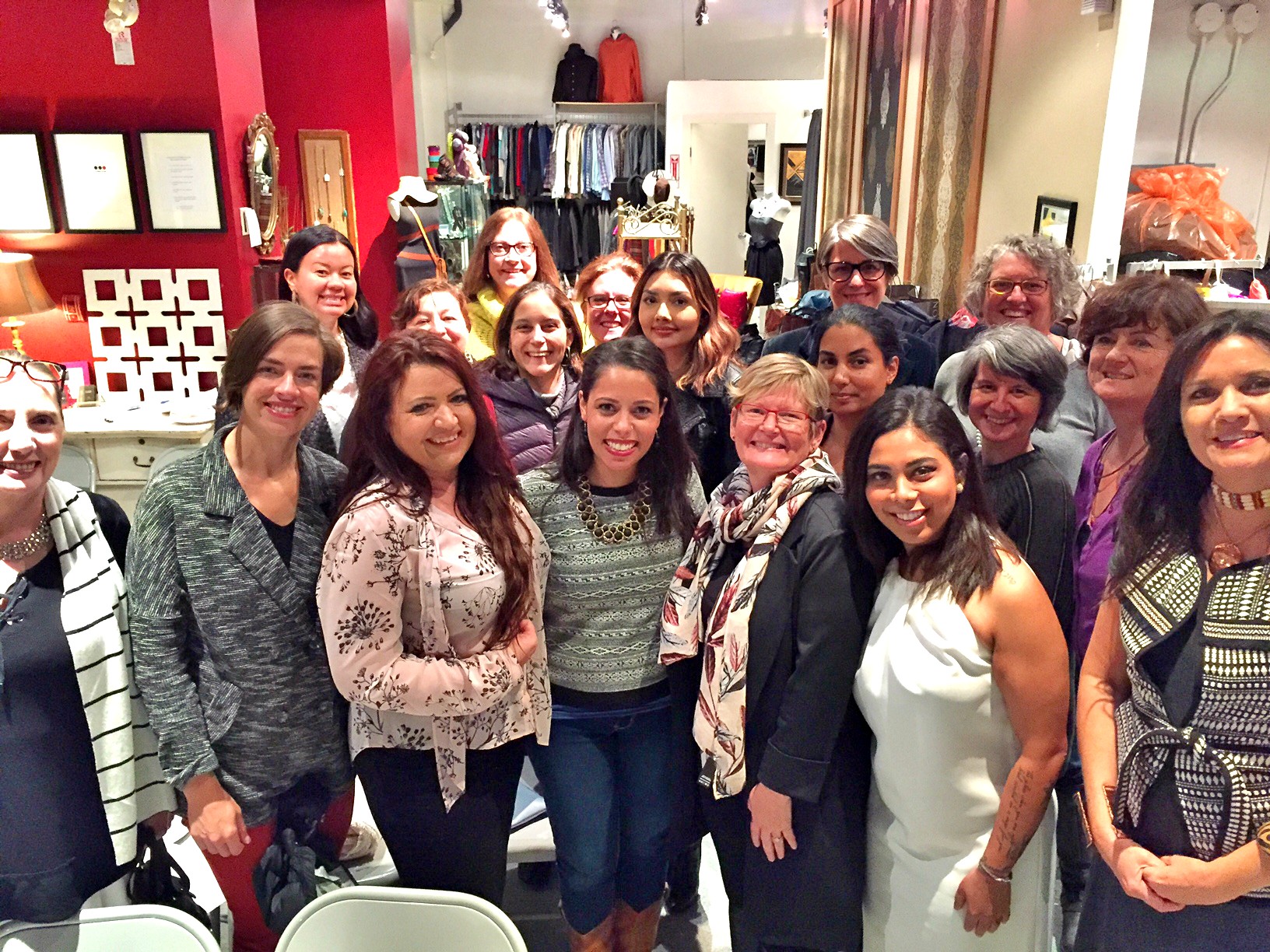Story Telling at the Intersections
Lucia Lorenzi cautions us to be careful with stories we tell while watching out for the stories we are told.
 Dr. Lucia Lorenzi is a humanities-based researcher whose scholarly interests focus on the representations of sexual violence in Canadian and Indigenous literatures, as well as representations of sexual violence in autobiographical works and in digital media. In addition to her research, she works in the anti-violence field as a writer, advocate, and anti-violence organizer, with a specific focus on campus sexual assault.
Dr. Lucia Lorenzi is a humanities-based researcher whose scholarly interests focus on the representations of sexual violence in Canadian and Indigenous literatures, as well as representations of sexual violence in autobiographical works and in digital media. In addition to her research, she works in the anti-violence field as a writer, advocate, and anti-violence organizer, with a specific focus on campus sexual assault.
Lucia Lorenzi spoke at Battered Women’s Support Services Annual General Meeting 2016, we were inspired by her beautiful and poignant words. Below is a transcription of her keynote address at the BWSS AGM 2016.
“Good evening, everyone. I want to first say that I am so thankful for the warm invitation to speak tonight, and I am glad to be here in solidarity with those who are working to end violence. I realize that it has been a particularly difficult few weeks regarding violence against women in the news, and so I want to acknowledge the weight of witnessing that sort of high-profile violence that seemingly cannot be avoided. While witnessing violence is a part of daily life for many of us in our work, and there are certain moments when the conversation becomes so loud that it is nearly unbearable. Tonight, then, is an invitation to be kind with ourselves as we witness violence and bear the weight of its stories. I must also thank the Coast Salish nations—the Katzie, Tsleil-Waututh, Squamish, and Musqueam—on whose traditional, ancestral, and unceded territories I have lived and worked for my whole life. It is impossible to speak of sexualized and gendered violence without also speaking about its connection to colonization, and to the ways in which Indigenous people, people of colour, queer folks, and trans folks face increased violence at the intersections of patriarchy and colonization. I am reminded of that today, October 18th, because it is Persons Day in Canada, a day that commemorates a 1929 legal case in which five white women successfully fought to have women—white women—recognized as persons under the law. Today, I am reminded that personhood is still not a given in this country. Personhood is not a given when one in three women will experience sexual assault before the age of 18. Personhood is not a given when Indigenous women and girls face extraordinary rates of violence. As such, I strive to be a good guest on these lands, and to be an ally to Indigenous communities who have been fighting this violence since colonization first began.
 I should also tell you a bit more about who I am. I am a biracial settler of Afro-Caribbean and European descent. On my father’s side, my ancestry is from Nigeria via Barbados through the Atlantic Slave Trade; on my mother’s side, my ancestry is from Germany and Austria. When I speak of my ancestry, I do so not only to indicate how I relate to my families and my communities, but also to share with you the ways in which violence is embedded in my identity. My grandmothers—two brave women, neither of whom I never had the opportunity to meet—were both survivors of violence at the hands of men. As their granddaughter, I carry their silences with me as much as I do their strengths, knowing that the luxury and privilege I have in being able to speak is something they did not have. I am also a loudmouth feminist activist and survivor. My own experiences of sexualized and gendered violence have shaped my daily life, my activism, and my career. Having been assaulted primarily in educational institutions, my activism has its roots in campus sexual violence, in the ways in which violence both flows into those institutions, and flows out of those institutions. At UBC, I spoke out about the rape chants in 2013, sought to hold the university accountable for many of its misguided ideas about what “security” looks like, and more recently, to insist that student survivors are at the table when it comes to creating sexual assault policies. Finally, I am a scholar. My research focuses on representations of violence in literature and other media (including social media), and I am particularly interested in how violence affects the kinds of stories we tell, and how the stories we tell affects the kind of violence that takes place. Tonight, then, I want to talk about stories: about their power, about how they can be used to heal, about how they hurt, and what our responsibilities are in witnessing stories of violence.
I should also tell you a bit more about who I am. I am a biracial settler of Afro-Caribbean and European descent. On my father’s side, my ancestry is from Nigeria via Barbados through the Atlantic Slave Trade; on my mother’s side, my ancestry is from Germany and Austria. When I speak of my ancestry, I do so not only to indicate how I relate to my families and my communities, but also to share with you the ways in which violence is embedded in my identity. My grandmothers—two brave women, neither of whom I never had the opportunity to meet—were both survivors of violence at the hands of men. As their granddaughter, I carry their silences with me as much as I do their strengths, knowing that the luxury and privilege I have in being able to speak is something they did not have. I am also a loudmouth feminist activist and survivor. My own experiences of sexualized and gendered violence have shaped my daily life, my activism, and my career. Having been assaulted primarily in educational institutions, my activism has its roots in campus sexual violence, in the ways in which violence both flows into those institutions, and flows out of those institutions. At UBC, I spoke out about the rape chants in 2013, sought to hold the university accountable for many of its misguided ideas about what “security” looks like, and more recently, to insist that student survivors are at the table when it comes to creating sexual assault policies. Finally, I am a scholar. My research focuses on representations of violence in literature and other media (including social media), and I am particularly interested in how violence affects the kinds of stories we tell, and how the stories we tell affects the kind of violence that takes place. Tonight, then, I want to talk about stories: about their power, about how they can be used to heal, about how they hurt, and what our responsibilities are in witnessing stories of violence.
I have a couple of questions with which I want to frame my talk. The first: what do we do when we have too many stories, too much information, so much that it overwhelms our hearts and our spirits? The second: what do we do when we don’t have enough stories, not enough information, so little that we are afraid, so little that our communities cannot adequately understand the kinds of violence they are exposed to? I want to try to untangle these two questions by talking about two recent incidents that made me reflect on these extreme sides of the spectrum: the first, is about the American politician I shall not name, whose acts of violence and degradation have been making front-page news for a few weeks; the second is about the recent violent assault of a woman in residence on the UBC campus.
In the first instance, news of this American politician’s violent actions have been impossible to ignore. Recordings of his degrading comments about women, including his seeming pride at committing sexual assault have been broadcast on television and radio, reported on in newspapers, and brought up during the presidential debate. As victims come forward, we are now hearing first-hand from what is sure, as with a certain American entertainer, to be only the tip of the iceberg in terms of victims’ accounts of the abuses they have suffered at the hands of a man with enormous financial and social power. As an avid social media user, I realized that it was soon impossible to be online without being exposed, not only to this man’s vile words, but also to the words of those who were defending him. But as with a certain American entertainer, and with a certain Canadian radio personality who worked at the CBC, social media also became a way that survivors and allies could shift focus away from individual perpetrators and onto the greater problem of violence in our culture.
In the past several years, there have been numerous viral hashtags on Twitter that have precisely captured just how many untold stories are out there. There has been #EverydaySexism, #YesAllWomen, #SurvivorPrivilege, #FastTailedGirls, #YouOKSis, #RapeCultureisWhen, #BeenRapedNeverReported, #WhyWomenDontReport, #NotOkay, and countless more. It is impossible to describe the ways in which these hashtags – some of them now years old – continue to thrive and flourish with survivors who refuse to be silenced. But there is also something exhausting about this. How do you cope with witnessing so many endless stories, many of which are being shared for the first time? American writer Lindy West Tweeted last week: “i wish women didn’t have to rip our pasts open & show you everything & let you ogle our pain for you to believe us about predation & trauma.” I don’t think it’s a coincidence, then, that as we have technology that allows us to share these stories and to do so with incredible speed, that we are also facing backlash, particularly in colleges and universities, against the idea of safe spaces or trigger warnings, against the ideas that stories might injure us. Whatever people’s particular stance on safe space or trigger warnings are, I think it reveals an underlying problem, which is that for all of the political rhetoric, and all of the analytical apparatuses, we still find it hard to talk about how stories make us feel. In my own classroom, I try to get my students to articulate this range of emotional response, more dynamically than just “I loved this book” or “I really hated this book.” The emotional reactions that we have towards literature comprise a spectrum much more vibrant and complex than indifferent on the one end and triggered on the other. Stories can irritate us, upset us, confuse us, anger us.
Given how often sexual assault is featured in the media (including as a tired trope in far too many TV shows, movies, and novels), it’s easy to think that there’s a level of transparency in conveying information to the public about sexual assault. What I’ve learned in my time at UBC is that we still struggle to get information. UBC has failed to notify students of assaults in residences several times over the past years. Just recently, an undergraduate student was attacked at knifepoint by a male student in her dorm at UBC. Thanks to the quick intervention of her fellow residents, she escaped further harm, and the male student was promptly taken into custody by police. This happened at noon on a Tuesday, and it was only at around 7 or 8 that evening that I started to hear reports of the assault, not from the university itself, but from local news outlets. An incident this violent, I reasoned, should prompt some sort of statement from the university sooner than later. There was nothing that night. The next morning, still nothing. 27 hours passed until the university finally released a response. When university administrators were asked why there was such a delay in releasing the information to the public, the answer that was first year students were notified because they were the “most directly affected,” citing the RCMP’s statement that with the suspect in custody, there was “no continuing risk.” This gave me pause: who determines who is directly affected? For those of us who teach first-year classes, as I did throughout my time at UBC, what does it mean for us to walk into our classrooms when our students might be afraid? How can we best comfort the upset student when we have no idea what is going on? If trauma ripples outwards through a community—and it almost always does—then is there not a “continuing risk” of student anxiety and feelings of insecurity if the incident is never publicly acknowledged in a timely fashion? I wondered. President Santa Ono eventually released a statement acknowledging the anxiety that this violence had produced, but the broadcast email in which it was contained provided no links to students for support, save for 9-1-1 in case of emergency. I worry about this. I worry about the ways in which news about violence on campus gets shared (or not shared), and how little we still seem to consider that violence affects all of us, directly and indirectly, acutely and long-term.
When people ask me why I decided to do a PhD in English Literature to study sexual violence, rather than any other field—psychology, law, medicine, sociology—I usually respond by saying that what I do is not so different than those other fields. Stories are so powerful that they are testimony under the law. I turn to the words of Cherokee/Greek scholar Thomas King, who in “The Truth About Stories: A Native Narrative,” writes that “the truth about stories is, that’s all we are.” At the end of the day, whether we are in a court of law, in a therapist’s office, whether we are making public policy or listening to someone who trusts us to hold space for them, we understand the experience of sexual assault through the stories we tell about them; stories which are difficult, painful; some stories which become myths; some stories which shine bright lights of truth. King also cautions us: he writes “you have to be careful with the stories you tell. And you have to watch out for the stories that you are told.” Like medicine, stories in excess are dangerous, just as stories in too little dosage are inefficient. Achieving this balance in storytelling is difficult at the best of times, never mind when we are talking about the kind of violence that can so deeply fracture communities. I don’t know how to end sexual violence, certainly not in my lifetime. But what I do know is that we must keep talking about sexual violence, but also keep talking about how we talk about sexual violence, to develop our sense of empathy as much as we do our critical lenses.”





